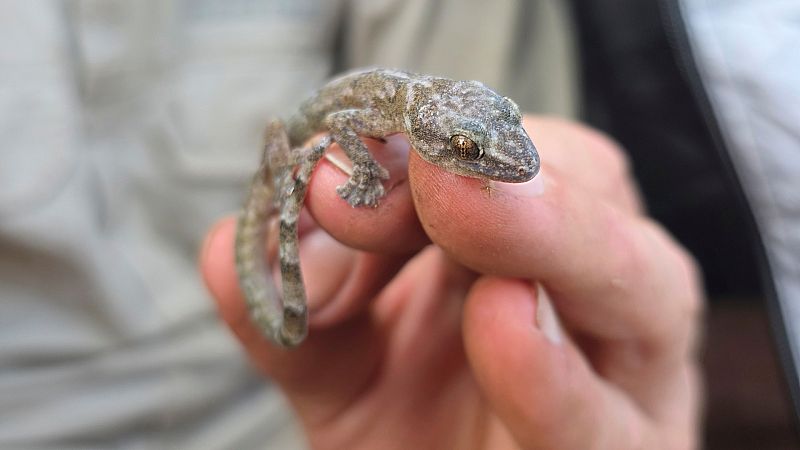
Researchers who were dropped off by helicopter in a largely inaccessible and remote canyon in South Africa say they have discovered a type of gecko that hadn't been seen in more than 30 years and was thought to be extinct - or maybe to have never existed at all.
The Endangered Wildlife Trust said Wednesday that two of its researchers had found specimens of the Blyde Rondavel flat gecko. It was first identified in the same canyon in Mpumalanga Province in northeastern South Africa in 1991, only to not be seen again.
Mystery surrounded the little lizard over the next three decades - was it extinct, or were the two male specimens originally found actually just juveniles from another gecko species, as some suggested?
Researchers Darren Pietersen and John Davies returned to the same site last month, determined to find the Blyde Rondavel flat gecko again and solve the conservation conundrum that had rankled Pietersen.
What is a 'lost' species?
Because the Blyde Rondavel gecko hadn’t been recorded for more than 10 years, it was considered a “lost” species. The International Union for Conservation of Nature, the authority on threatened species, listed it as data deficient, meaning not enough was known to say for sure if it was extinct.
“Having a species that is data deficient annoys me," said Pietersen. "I’ve always loved the species that others wouldn’t study because they’re harder to find or obscure.”
The research trip was two years in the making after they registered at least six applications for permits to go, Pietersen said.

They were dropped off on the top of one of the canyon's landmark circular rocky outcrops, which have sheer cliffs more than 100 metres high that can't easily be climbed and where the geckos were thought most likely to be. It was the exact same outcrop where the geckos were found in 1991.
Pietersen and Davies only had three days camping on the outcrop to find the geckos, which are around 8 to 9 centimetres long when fully grown.
“And when we did, we were elated to say the least,” said Pietersen. He said they saw 20 to 30 specimens and captured and photographed seven, giving the world a glimpse of a lost gecko three decades in the making.
The fifth animal rediscovered in recent years
The Endangered Wildlife Trust said the data they collected, including tissue samples, should allow them to confirm it is a distinct species.
The trust said the gecko was the fifth animal they had rediscovered in recent years. A mole that lives in sand dunes was found in 2021 after having not been seen for more than 80 years, and a butterfly, a lizard and a frog species have also been found again in the last four years after being lost to conservationists for decades.
They all show how much there is still to learn about the world's biodiversity, the Endangered Wildlife Trust said.







